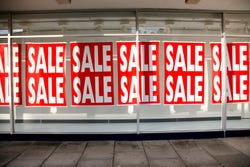Reach new customers with effective trade marketing supportReach new customers with effective trade marketing support
February 15, 2013

When it comes to category management, you may know the seven essential components, but do you know how to implement each one?
To provide you with a better understanding of how important the 7 musts of true category management are in helping you grow your business, over the next several weeks we will be taking a closer look at each one.
Trade Marketing Support
Trade marketing's focus is on inviting new customers to shop your brand, encouraging consumers to choose your brand over the competition, raise brand awareness, support your retail partners and grow sales sustainably.
 Trade marketing support includes everything from grass roots initiatives to full blown ad campaigns, and analysis of historical events as well as projections for future sales trends.
Trade marketing support includes everything from grass roots initiatives to full blown ad campaigns, and analysis of historical events as well as projections for future sales trends.
A recent study by Nielsen claims that less than half of all trade promotions fail to increase brand or category growth. This is unfortunate, because the main goal of trade marketing is to do just that—grow one's brand by increasing the demand at the retailer/distributor level.
Trade marketing is typically the largest line item on a company balance sheet, but that doesn't necessarily mean it's effective. True category management can help you get a higher ROI for your trade marketing budget and effectively reach your target consumer.
Crafting effective promotions
The primary driver for trade marketing is promotion. Promotions include pricing and merchandising strategies that encourage new customer trials and should be designed around the goal of increasing consumer traffic.
True category management will help identify the optimum opportunities to promote, the promotion vehicles (in store coupons, displays, retail features like temporary price reductions (TPR), etc.), the best price point, and the ideal consumer to target. Remember that the goal of a good promotion is to boost everyday sales after the promotion has expired.
For example, if your everyday price is $1.99, what should your sale price be? Is it better to promote at $1.29 with a TPR where your sales increase 21% (your "lift"), or is it better to promote at $1.59 with a feature and display? The feature and display might result in a lift of 67% and the additional volume increase would more than cover the additional cost of the display.
The first example might give you a one-time sales spike, while the second option might result in new loyal consumers and sustainable growth. As a result, the second option might cost less than the first option while doing far more to grow sustainable sales.
What are you doing to build brand awareness?
Daniel Lohman  is the owner of Category Management Solutions (CMS) which provides innovative strategic solutions for natural and organic CPG companies interested in gaining a significant competitive advantage.
is the owner of Category Management Solutions (CMS) which provides innovative strategic solutions for natural and organic CPG companies interested in gaining a significant competitive advantage.
You May Also Like



